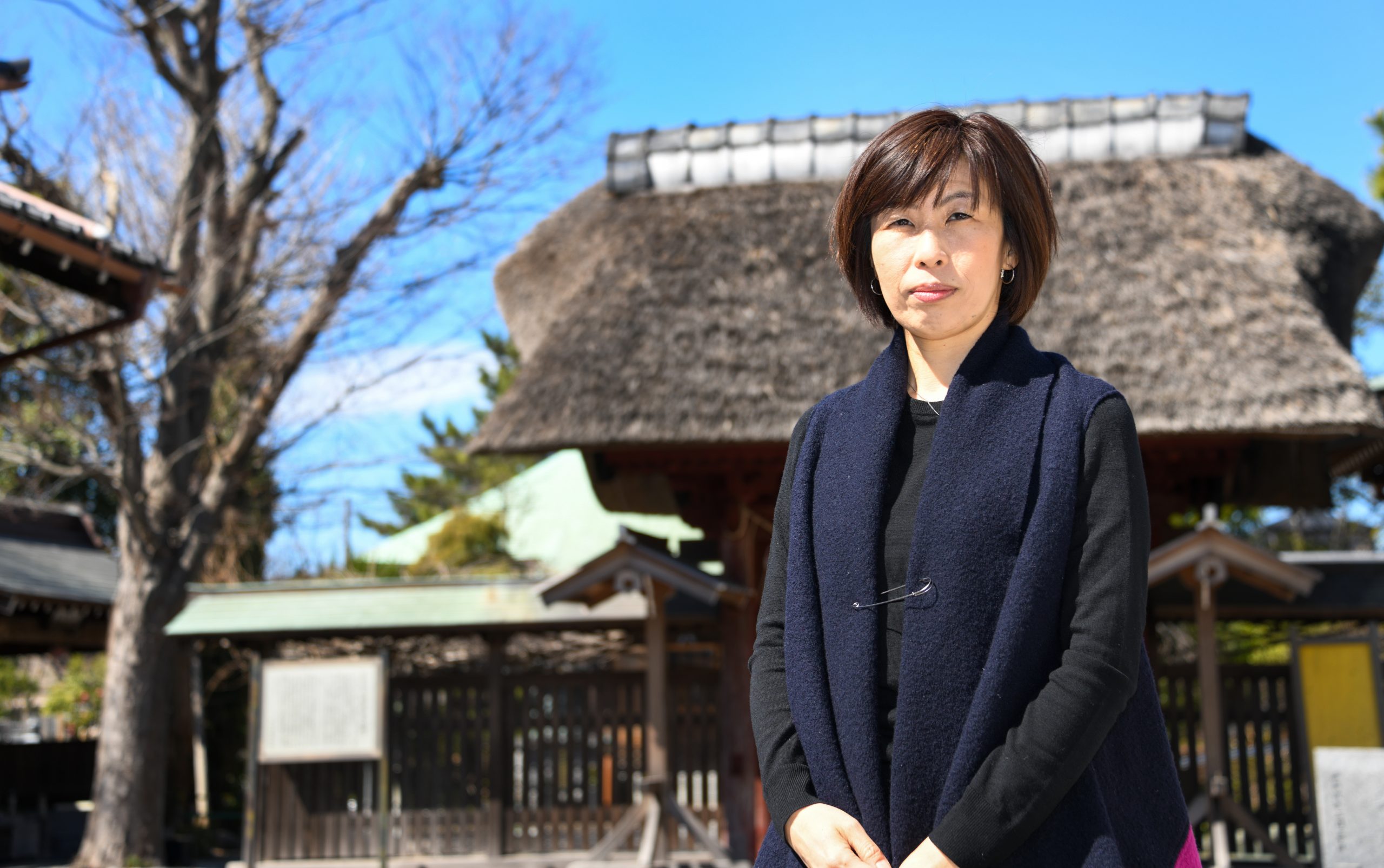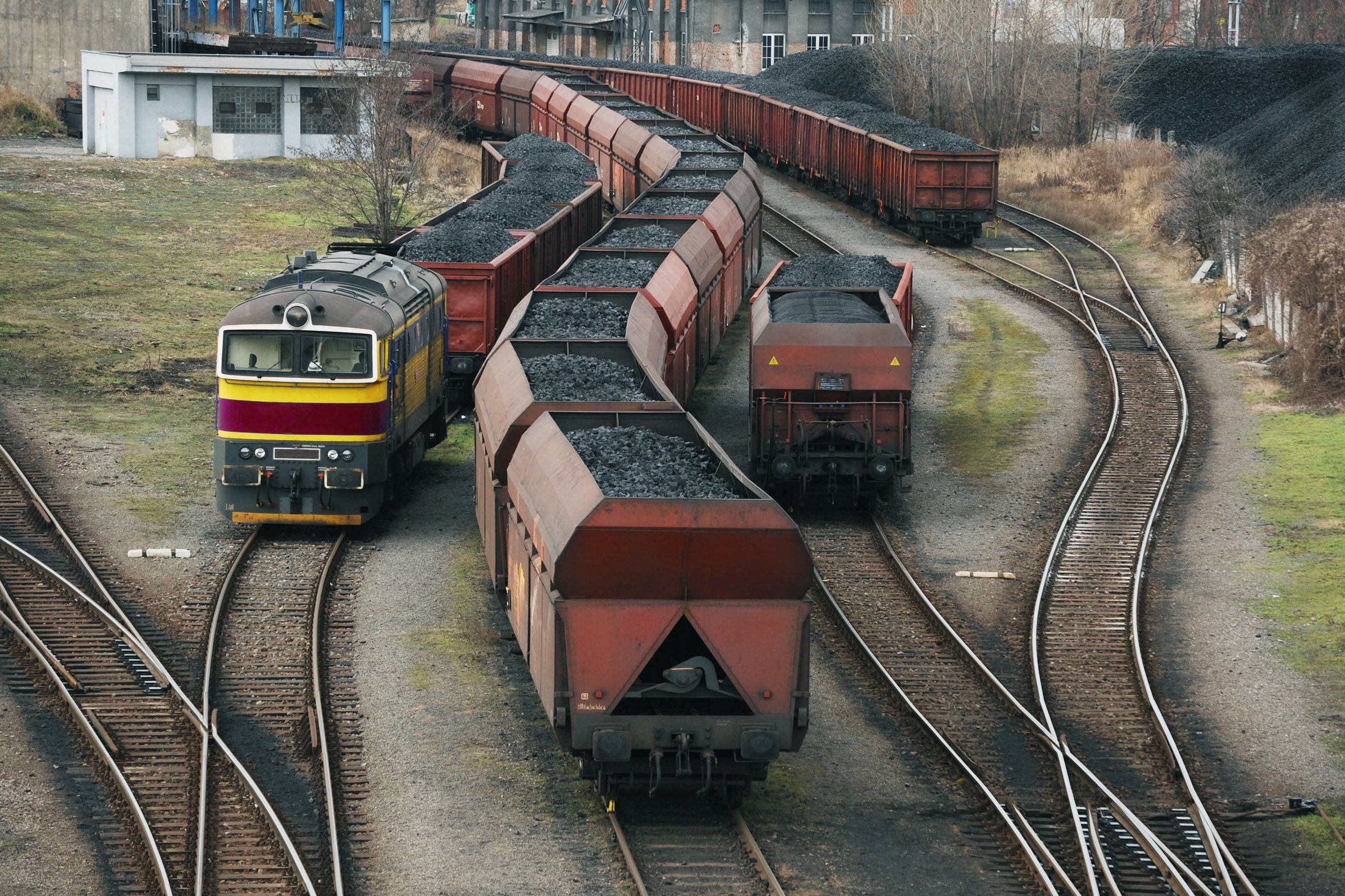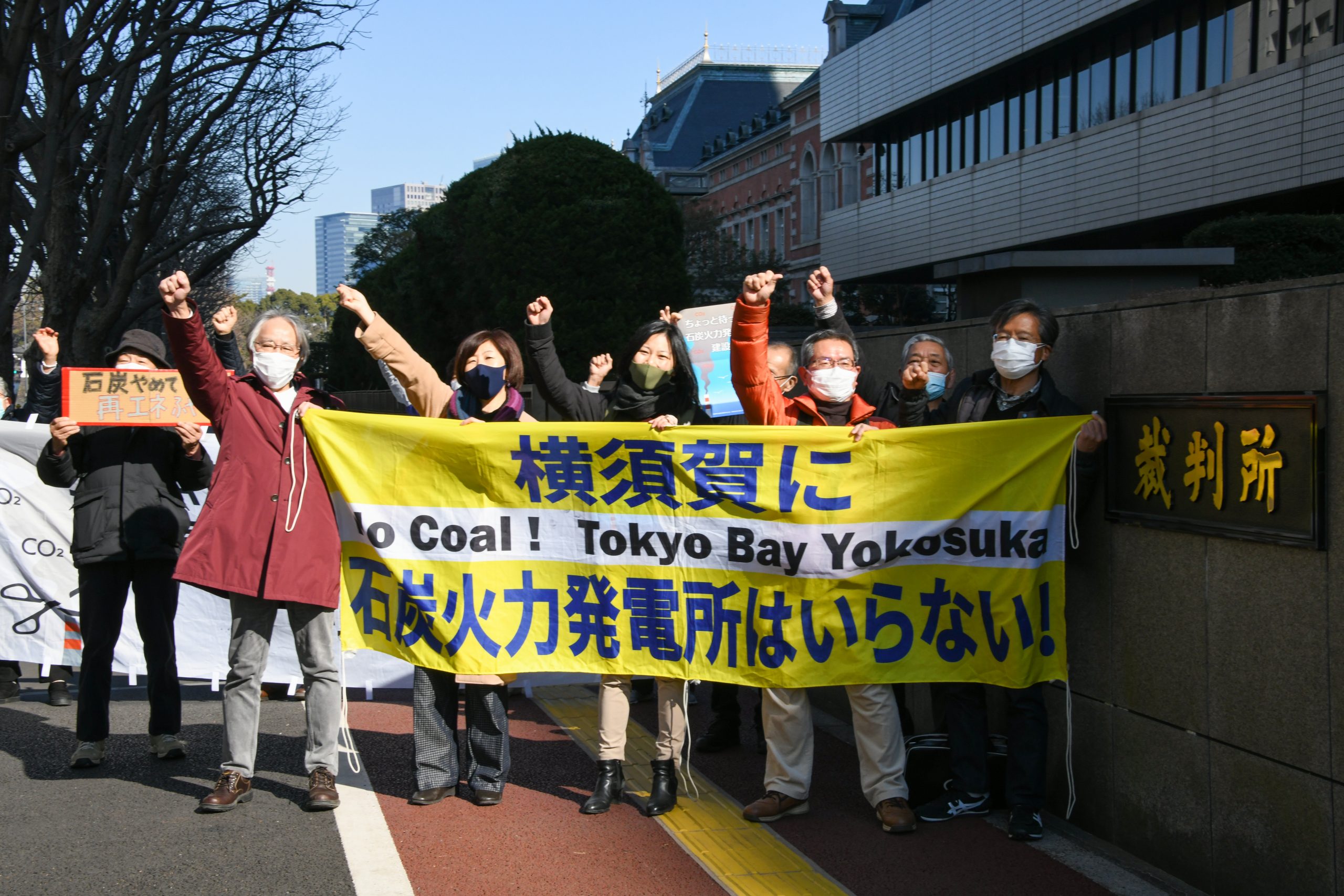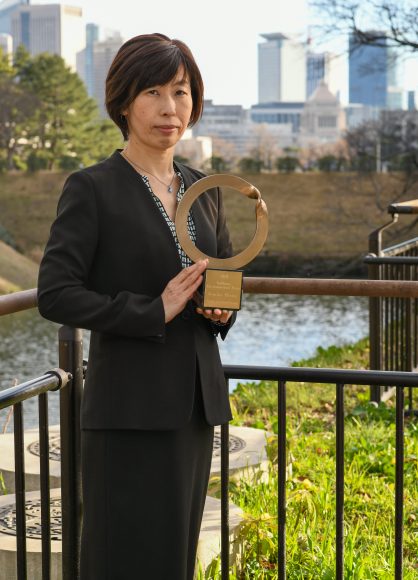Kimiko Hirata launches a grassroots campaign that stops the Japanese coal industry dead in its tracks.
 492
492  6 mins
6 mins Kimiko Hirata knows that climate change can seem overwhelming. So she set out to prove that each one of us can do concrete things to make real changes. This is the story of how she triggered a social tipping point around energy production in Japan.
When I heard that a single person launched a movement keeping 1.6 billion tons of CO2 emissions from being thrown into the atmosphere, I had to know more. It is almost unbelievable, it is such a gigantic number. To put her efforts in context, the world is looking for ways to remove 1 billion tons of CO2 from the atmosphere annually to reach the Paris Agreement climate targets. It is hard to find someone else in the world who has had the impact of Kimiko Hirata!
Keeping 1.6 billion tons of emissions out of the atmosphere is like having one person single handedly remove 7,500,000 cars from the road every year for 40 years.
Why wasn’t this front-page news? Who is Kimiko Hirata? How could she do this, and what could we learn from her?
Kimiko Hirata: “enough is enough”
My first stop was to reach out to the Goldman Environmental Prize. This prestigious environmental award is known as the “Green Nobel Prize” and had just awarded Kimiko Hirata the Prize for “Outstanding environmental achievement for Islands and Island Nations.” Kimiko is the first-ever female Japanese winner of the award. She is also the first recipient from Japan in 23 years.
I uncovered a story of incredible personal power. It’s the story of a private citizen who said: “enough is enough.” She channelled her personal conviction, perseverance, tactics and grit into fighting hugely powerful actors. Nothing about the fight was fair. The Japanese government and banks are some of the world’s most influential coal financiers. And the power imbalances are raw and deeply intertwined with gender, culture, politics, money and national interest.
But despite these fiercely skewed power dynamics, Kimiko Hirata has brought Japan to a social tipping point. It’s a point of no return. Her actions have triggered a decisive transformation of Japanese energy policy. As a result, the plans to build 13 new coal plants in Japan – nearly 40% of the county’s planned new coal plant capacity – have been abandoned. And the momentum she has created means that Japan is on its way toward entirely phasing out coal power by 2030 and going 100% renewable by 2050.

2021 Goldman Environmental Prize Winner for Islands and Island Nations, Kimiko Hirata (Photo courtesy of the Goldman Environmental Prize and Kimiko Hirata)
Japan’s most powerful earthquake
The story began on March 11, 2011, the day a Pacific ocean megathrust earthquake unleashed a tsunami on Japan. A cold, dark wall of water hurtled toward the Japanese coast at the brutal speed of 700 km/h (435 mph). The waves crested at 40 meters (130 feet). The tsunami smashed coastal towns, and destroyed the Fukushima Daiichi nuclear power plant.
The waves’ impact was immediate, and the results were devastating. The plant’s automatic cooling systems began to fail 3 minutes after the waves hit. Explosions and reactor meltdowns followed. Hundreds of thousands of people fled the area. It was the costliest natural disaster ever.
As a result, Japan’s energy policy debate flipped overnight. The nuclear industry was shuttered, and the country lost 30% of its energy generating capacity. The government decided to shift back to fossil fuels and announced plans to build 50 new coal-powered plants.
Suddenly, Japan had a massive pipeline of new coal power projects. It was the most significant expansion of coal power expansion of any nation.

Coal Cargo Trains (Image by Petr Student/Shutterstock)
Kimiko’s decision
“To be honest, I was shocked,” remembers Kimiko Hirata. “Using coal for energy was a complete reversal of Japan’s climate goals.” She knew that coal is the dirtiest form of energy production – even the most efficient coal plant emits twice as much CO2 as natural gas power plants.
“Coal power plants produce millions of tons of CO2 per year. They also emit heavy metals and air pollutants, including mercury, that endanger human health and the environment,” she explains. She knew that it was a new disaster and decided to fight back.
She would do what she could to stop these plants.
No time to lose
Kimiko knew what she was up against. She was about to use her minuscule NGO to challenge the government’s authority and some of the mightiest forces of Japanese industry and finance. She knew they didn’t have much time. Kimiko quickly gathered a team to launch the Kiko Network, a grassroots anti-coal campaign. Kikō is Japanese for “the climate”.
Their small team of 26 people (10 employees and 16 board members) developed a website to track the coal projects. “Construction plans for the new coal plants were spread all across Japan. So we created a website to warn the local communities, activists and media in these areas,” explains Kimiko.
By mapping out the projects, local citizens could target the key sites. They raised awareness about the hazards of coal power locally in communities slated for coal power projects. These local citizen groups also used the extensive Kiko Network to share information and resources and access experts. “We spoke with professors, lawyers, community groups and many others to explain the problem and enlist their support. The more people spoke out, the bigger our campaign became.”
Kimiko spoke at public hearings tirelessly. She also knew that people needed to speak at hearings in their own communities and make their voices to be heard. She successfully got hundreds of people to turn up at the hearings and speak. This type of citizen turnout at public meetings is rare in Japan. “People might complain about politics at home, but they take no action,” she said. “(In Japan) we are brought up not to express different opinions.”

2021 Goldman Environmental Prize winner for Islands and Island nations, Kimiko Hirata (Photo courtesy of the Goldman Environmental Prize and Kimiko Hirata)
Expanding her reach and finding ways to turn up the pressure
Kimiko knew that she needed to do more if she hoped to win. She reached out to activists outside of Japan, looking for ways to amplify her message. Her idea worked – activists from Asia, Europe and the US joined her fight and used social media to bring international pressure on the country. They organized protests at the UN’s Convention For Climate Change COP sessions to bring attention to their fight. Greenpeace released a report explaining how the plants would endanger public health. The Sustainable Finance Program at Oxford University and the Carbon Tracker began performing a financial analysis of new coal plants, proving that the projects were financially disastrous investments.
In a brilliant move, the Kiko Network also used shareholder activism to turn up the pressure on coal financiers. This small NGO began by purchasing shares in a high-profile Japanese bank in 2020. The purchase of shares gave them the right to introduce a climate resolution at the bank’s annual Shareholder Assembly. The resolution called on the bank to “publish a plan outlining the company’s business strategy – including metrics and targets – to ensure its investments align with the goal of the Paris Agreement” – an impossible task. The strategy had never been used before in Japan.
Rather than facing similar shareholder revolts, key Japanese coal investors began to abandon the projects. As a result, major financial groups such as Mitsubishi, Sumitomo, and Nippon Life announced that they will no longer develop or invest in coal plants.
Recognition and hope
Kimiko Hirata’s story is inspiring for so many reasons.
The authority of NGOs in Japan is weak, and women’s voices are noticeably absent at this level of executive decision-making in Japan. Neither gets much respect from government and business leaders. Nonetheless, Kimiko Hirarta spoke up and made her voice heard.
By redefining the tactics of NGOs in Japan, Kimiko Hirata – the ultimate underdog – led a pitifully underfunded and understaffed NGO in a fight against some of the wealthiest, most powerful institutions in the world. She skillfully managed the problem of limited resources and forced the Japanese coal industry to do the unimaginable.
In accepting the Prize, Kimiko Hirata spoke about how lonely it can be for people who need support in their fight against vastly superior forces. She noted, “I sincerely hope that this award will be an incentive to even greater efforts…we need more support.”
But above all, she is hopeful and convinced people can make real change happen. “Working on climate change issues may seem too challenging and daunting. But there are so many things we can do. We can make many real changes if we have a strong conviction to make progress… Having had some success gives us confidence that we can make a difference, and it gives me the courage to continue this work.”

2021 Goldman Environmental Prize winner for Islands and Island nations, Kimiko Hirata, with the Ouroboros (Photo courtesy of the Goldman Environmental Prize and Kimiko Hirata)
Join Kimiko Hirata in advocating for a transition from coal power to renewables
Follow @JapanBeyondCoal @kimikohirata @goldmanprize on Twitter or check out their website Kiko Network and annual report
Feature image credit: courtesy of the Goldman Environmental Prize and Kimiko Hirata
If you liked this article, you might also enjoy reading how retired schoolteacher Sharon Lavigne stopped the construction of a $1.25 billion petrochemical complex set to poison her community.


 James Morano courtesy of FILSAA
James Morano courtesy of FILSAA The Inspirer
The Inspirer